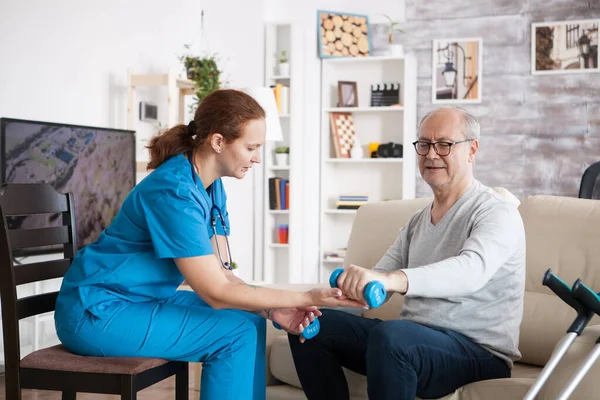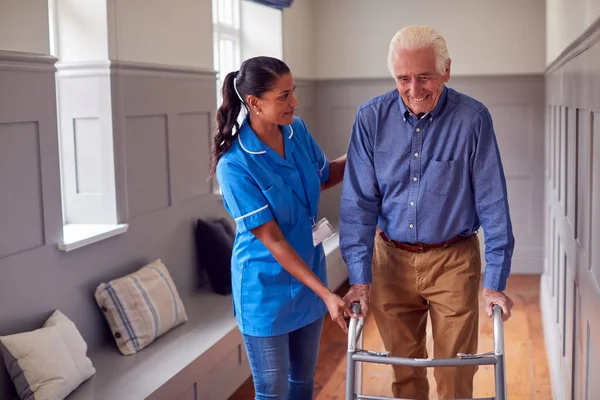Aged Care Emergency Training: Protecting Senior Lives During Critical Incidents
Emergency preparedness is crucial in every sector, but in aged care, it becomes a matter of life and death. Seniors in aged care facilities often have specific vulnerabilities—ranging from limited mobility to chronic illnesses—that make them more susceptible to harm during emergencies. Therefore, aged care emergency training is essential to safeguard senior lives during critical incidents.
This article will dive deep into the importance of this training, its key components, and the specific strategies used to ensure the highest level of safety for seniors. Uncover details effortlessly with just one click.
The Importance of Aged Care Emergency Training
Vulnerability of Senior Populations
Senior populations are particularly vulnerable during emergencies due to physical and cognitive limitations that can impede their ability to respond swiftly. Conditions such as reduced mobility, chronic illnesses, and cognitive impairments increase their risk in critical situations. Understanding these vulnerabilities is essential for developing effective emergency response strategies that prioritize the safety and well-being of older adults.

Regulatory and Legal Requirements
In many countries, there are strict regulations and guidelines that aged care facilities must adhere to regarding emergency preparedness. Compliance with these standards ensures that all potential threats are accounted for and mitigated through thorough planning and regular training. Failure to meet these requirements can result in severe legal consequences and harm to vulnerable residents.
Psychological Impact on Seniors
Beyond the physical risk, emergencies can be extremely stressful for seniors. The fear of the unknown and the inability to respond quickly can lead to panic, anxiety, and even medical complications such as heart attacks. Effective emergency training not only equips staff to manage physical safety but also helps them support seniors emotionally during high-stress events.
Key Components of Aged Care Emergency Training
- Risk Assessment and Preparedness Planning: Facilities must identify potential hazards (fires, medical emergencies, natural disasters) through thorough risk assessments and develop tailored emergency preparedness plans that address these risks.
- Evacuation Procedures: Staff are trained to safely evacuate seniors with mobility issues, cognitive impairments, and medical devices, using specialized equipment like evacuation chairs and stretchers, ensuring minimal risk to residents.
- Communication Protocols: Effective training ensures clear communication within the facility and with emergency responders, focusing on timely and calm interaction, particularly with non-verbal or confused residents.
- Medical Emergency Response: Staff are taught essential first aid, CPR, and the use of defibrillators, as well as how to handle life-threatening conditions like strokes, heart attacks, and disruptions to medical equipment during emergencies.
- Security Threats: Emergency training covers lockdown procedures, de-escalation of internal or external security threats, and collaboration with law enforcement, ensuring a safe and controlled environment during crises.

Types of Critical Incidents and Specialized Training
- Natural Disasters (Floods, Earthquakes, Fires): Training focuses on safe evacuation routes, emergency exits, and utility shutdowns, equipping staff to handle fires and environmental hazards while safeguarding residents with limited mobility.
- Fire Drills and Suppression: Staff undergo regular fire drills and learn how to use fire extinguishers and containment strategies, ensuring quick action to prevent small fires from escalating.
- Medical Emergencies: Specialized training in recognizing signs of critical conditions like heart attacks or strokes, administering CPR, and using defibrillators, helps staff provide immediate life-saving care.
- Power Outages and Medical Equipment Failures: Staff are trained to manage power disruptions that could affect vital medical equipment (e.g., ventilators, oxygen tanks), ensuring uninterrupted care for residents dependent on such devices.
- Security Threats: Training includes lockdown protocols, responding to intruders, and de-escalating internal disturbances, ensuring coordination with local authorities and the protection of both residents and staff.
Ongoing Drills and Education: Building a Culture of Safety
Regular Emergency Drills
Regular emergency drills are vital for ensuring that aged care staff and residents are well-prepared for potential crises. These drills familiarize staff with evacuation routes and emergency procedures, allowing them to act quickly and confidently when real emergencies occur. Additionally, practicing drills helps reduce anxiety among residents, making them more comfortable with the emergency response process.
Continuous Education and Training Updates
Continuous education and training updates keep aged care staff informed about the latest emergency response techniques and protocols. Regular workshops and simulation drills reinforce critical skills, ensuring that staff can respond effectively in crisis situations. This ongoing learning fosters a culture of preparedness and enhances the safety of both residents and caregivers.
Challenges and Barriers in Implementing Emergency Training
Staffing Limitations
Staffing limitations can pose significant challenges to effective emergency training in aged care facilities. With often reduced staff levels, it becomes difficult to ensure that all team members receive comprehensive training and can participate in regular drills. This shortage may compromise the facility's overall readiness and ability to respond effectively during critical incidents, potentially putting residents at risk.
Resource Constraints
Resource constraints often limit aged care facilities from implementing comprehensive emergency training programs. Budget restrictions can affect access to specialized training, essential equipment, and sufficient staff for conducting effective drills. Consequently, facilities must find creative ways to prioritize safety while managing their operational needs within tight budgets.
Resident-Specific Needs
Addressing resident-specific needs is crucial for effective emergency training in aged care facilities. Each resident may have unique medical, cognitive, and physical requirements, necessitating tailored emergency procedures that consider their capabilities. Training must equip staff to recognize and respond to these individual needs to ensure the safety and well-being of all residents during critical incidents.

